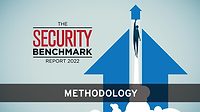Risk Mitigation Among Essential Businesses

With COVID-19 still an ever-present threat, many essential businesses have learned important lessons about business resiliency, maintaining operations, and mitigating the unique risks and considerations that a pandemic such as this brings to the forefront.
There are a number of things that businesses can do to continue operations and mitigate risks during this time. Let’s talk about nine of the lessons that can translate to any enterprise, business and organization.
- Be flexible. According to Vice President of Integrated Security Solutions at G4S Americas, Rachelle Lovear, perhaps the most important lesson for essential businesses is flexibility. As guidelines and mandates change, employee health and circumstances change, and businesses find their footing in this ever-changing landscape, the ability to be flexible will help you out over the long-term, says Lovear. Perhaps you’ll need to change or stagger work hours to permit social distancing or limit building occupancy; perhaps you’ll have to let non-frontline workers work from home. Being resilient and able to adapt to the changing needs of the company and its employees and customers will go a long way.
- Leverage technology. Right now, companies, facilities and organizations can benefit from knowing who is in and out of their facility. Many organizations can leverage existing technology to track some of these metrics and do contact tracing. Some may need to tap into newer technologies or add on to existing technologies for symptom checklists and tracking, temperature scanning and more.
- Open doesn’t have to be all or nothing. This goes back to being flexible perhaps, but in order for organizations to open, they don’t need to open up an entire facility, says Lovear. A store may only open up half of its building for example. Using a creative approach of access technology, barriers, signage and an employee directing traffic, organizations can open up parts or areas of a building. This can be helpful for corporate offices as well and can reduce the logistics necessary to reopen a building safely and securely.
- Do it, until you need to do something else. While we’ve talked about being flexible and creative with mitigation tactics and pandemic response efforts, some facilities such as healthcare facilities, don’t have the ability to close, and in these scenarios, security directors and teams need to put plans and responses in place—with the understanding that those may need to change or be adjusted over time. For example, perhaps you have lines on the floor or signage to control traffic, bar access and limit the direction of traffic. “If you show people you are handling it, then you can do the best you can,” Lovear says. Until you need to do something else.
- Leverage your peers. Another important tip and lessons learned during this time is the importance of sharing information and supporting each other. The security industry has long been an industry of executives and professionals willing to network and share best practices to keep themselves, their companies and their communities safe. Now is a great time to continue that practice of pooling resources, sharing information and helping one another out for a safer community.
- Think outside the box. The first solution you try may not be the best solutions. Be willing to think outside the box and adjust on the fly, Lovear says. In addition, though we talked about the importance of leveraging technology, not everything has to be high tech. Companies can great creative with their pandemic response and reduce exposures, contact and risk by making small adjustments. Lovear points to the example of one company that instead of shutting its cafeteria down, restructured operations: shifting to prepackaged foods only; requiring employees to order items one day ahead of time; having disposable cups, cutlery, etc.; and comping employee items to discourage them from having to go outside the building. Not only did many of these changes limit a large amount of risk, but it can help raise morale among employees and send them the message that you care.
- Learn something new. As you prepare to reopen or are analyzing existing or past plans and reactions, take note of what is working and what’s not. Use this time to analyze whether your employees are following protocols or need refreshers on how to use their ID cards, where to find sanitization stations and other expectations. Lovear says that now is the time to analyze and educate on best practices, while employees are particularly more mindful of their surroundings.
- Be aware that people will still be noncompliant. It’s important to note that organizations will still have employees or customers that are noncompliant. The reason this is important is it can help you and your management team think through possible loopholes or rules, or analyze nonadherence to rules, in an effort to adjust them early on or even before implemented to mitigate issues down the road.
- Let an expert help. Essential organizations can tap into their networks of peers, as well as garner feedback from management and employees. They can also turn to their integrator, consultant or other expert in the field to learn about new technologies, think about ways to leverage their existing technologies or processes, and just get a different perspective on risk mitigation and solutions to help them wade their way through this storm.
Looking for a reprint of this article?
From high-res PDFs to custom plaques, order your copy today!






